There is hardly any forestry book which doesn’t contain any information about the age of trees. 1’100 years old – a respectable age – are the oldest larch trees growing at the upper forest line in the French west Alps and the oldest bristlecone pine grew 4’900 years old at the upper tree line of California. The question is obvious as to what age old shrubs and dwarf-shrubs can grow.
Maximum age of dwarf-shrubs and herbs
In comparison as to hold trees can grow, shrubs, dwarf-shrubs, and herbaceous species reach only young ages. The following maximum ages were dendrochronologically assessed for dwarf-shrubs grown in the area of the upper forest line in the Alps:
- Alpine rose, Rhododendron ferrugineum: 103 years
- Trailing Azalea, Loiseleuria procumbens: ca. 100 years
- Winer heath, Erica carnea: 82 years
- Mountain avens, Dryas octopetala: 80 years
- Least willow, Salix herbacea: ca. 70 years
There is almost nothing known about the age of herbaceous species. Even the extended flora literature only lists one- or two-year old or perennial species. First investigations have shown that herbs as well as dwarf-shrubs reach their maximum age at subalpine and alpine elevations:
- Draba aizoides: 43 years
- Helianthemum nummularium: 35 years
- Alchemilla alpina: 37 years
- Gypsophila repens: 30 years
- Saxifraga aizoides: 22 years
- Campanula cochelariifolia: 19 years
The genetic component
The distinctness of growth rings is based on a genetic component. Thus, within the family of the Caryophyllaceae and Rosaceae, more species show distinct growth rings than, for example, within the family of the Asteraceae. Furthermore, it seems that certain plant species respond very sensitively to climate changes while others show hardly any growth zones even after a drought period of several months.
The site component
The average ages of herbaceous perennials and dwarf-shrubs increase from the subtropical to the alpine zone. On the Canary Islands, herbs are on average three to four, in the alpine lowlands five, and in the subalpine zone thirteen years old. Dwarf-shrubs are older. They reach on the Canary Islands, in the Mediterranean and in the alpine lowlands an average age of eight, but at the forest line, 39 years of age.
We assume that the rings within the wood of plants growing in regions with a distinct seasonal pattern are real growth rings. The rings of plants growing in the Sahara and in the subtropics may also be "rain rings" as after each rainfall there is a growth push which is stopped again due to drought. However, this is still to be tested. With approximately 80% of all plant species from the central European region, we are almost certain that the plant age can be assessed to the year by means of growth zones.
Wood anatomical anomalies
In respect to the wood anatomy, there were surprises. Although small plant species are exposed to different mechanic and ecological parameters, the stem growth follows similar patterns as with trees; a cambium forms wood towards the inside and bark towards the outside of the stem (secondary radial growth). With perennial herbs of dicotyledonous plants, only few species differ from this rule.
All species of the Polygonaceae show several consecutively staggered cambia, and within the family of the Primulaceae the primrose is not able to develop a secondary radial growth. They grow similarly to monocotyledonous plants such as the palm trees. Only two characteristics have been established among all plant systematic units: the number of pores (water conducting vessels in the wood) is very high - it varies from 300 to 1'000 per square millimeter - and the vessel diameter with 0.01 to 0.02 mm, which is very small compared to the stems of deciduous species.
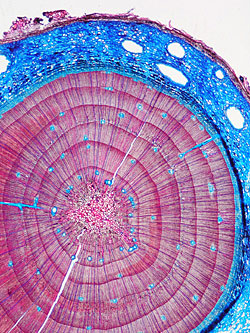
Cross section of a stem from a Swiss Pine (Pinus cembra). Photo: Fritz Schweingruber (WSL)
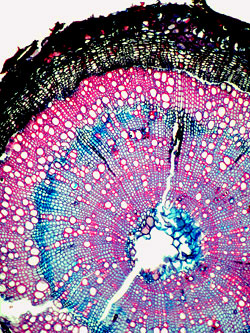
Cross section of a stem from a Common Yellow Woodsorrel (Oxalis stricta). The structure is remarkably similar to the cross section of Swiss Pine. Photo: Fritz Schweingruber (WSL)

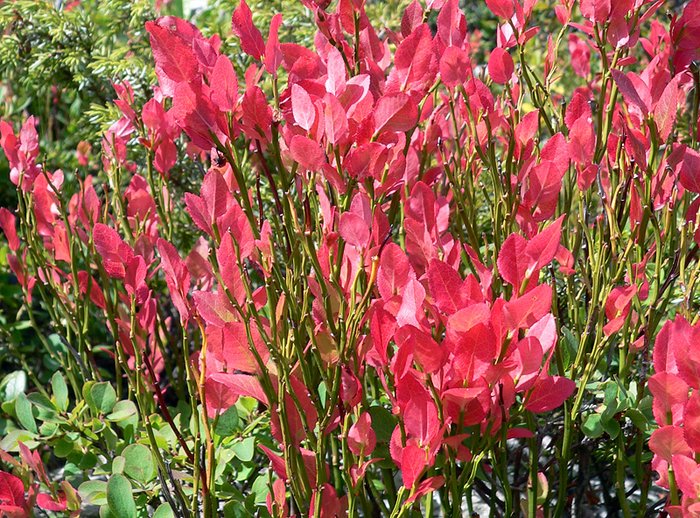
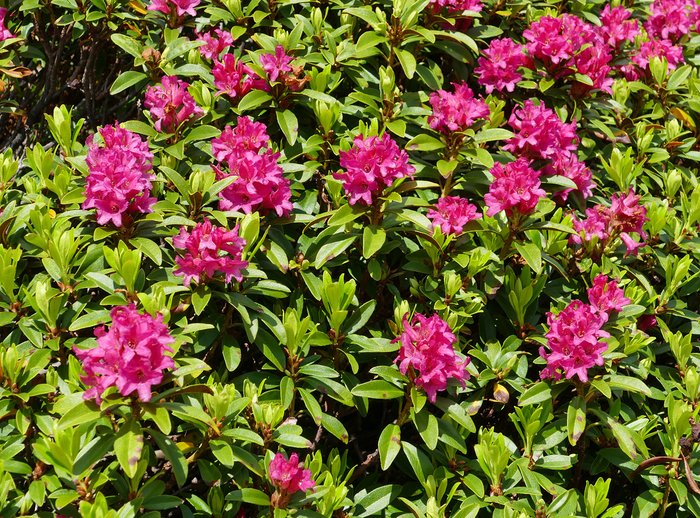
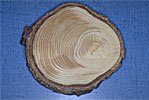
![[Translate to English:] [Translate to English:]](/assets/_processed_/9/5/csm_Oxalis_stricta_3065ccb61e.jpg)